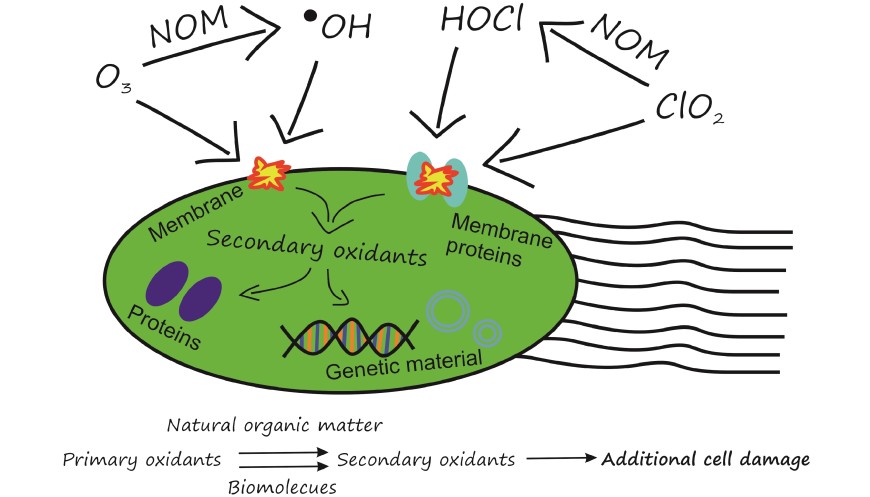New Publication in Water Research
Bacterial inactivation processes in water disinfection – mechanistic aspects of primary and secondary oxidants – A critical review
2023/02/07
Mischa Jütte, Mohammad Sajjad Abdighahroudi, Torsten Waldminghaus, Susanne Lackner, Holger V. Lutze

Water disinfection during drinking water production is one of the most important processes to ensure safe drinking water, which is gaining even more importance due to the increasing impact of climate change. With specific reaction partners, chemical oxidants can form secondary oxidants, which can cause additional damage to bacteria. Cases in point are chlorine dioxide which forms free available chlorine (e.g., in the reaction with phenol) and ozone which can form hydroxyl radicals (e.g., during the reaction with natural organic matter). The present work reviews the complex interplay of all these reactive species which can occur in disinfection processes and their potential to affect disinfection processes. A quantitative overview of their disinfection strength based on inactivation kinetics and typical exposures is provided. By unifying the current data for different oxidants it was observable that cultivated wild strains (e.g., from wastewater treatment plants) are in general more resistant towards chemical oxidants compared to lab-cultivated strains from the same bacterium. Furthermore, it could be shown that for selective strains chlorine dioxide is the strongest disinfectant (highest maximum inactivation), however as a broadband disinfectant ozone showed the highest strength (highest average inactivation). Details in inactivation mechanisms regarding possible target structures and reaction mechanisms are provided. Thereby the formation of secondary oxidants and their role in inactivation of pathogens is decently discussed. Eventually, possible defense responses of bacteria and additional effects which can occur in vivo are discussed.
